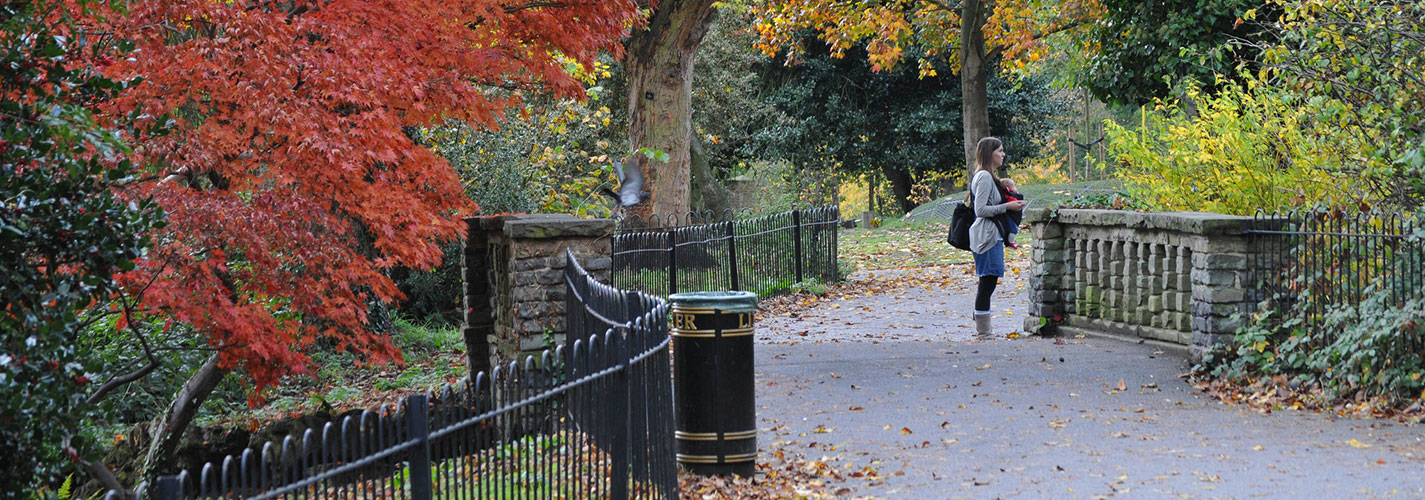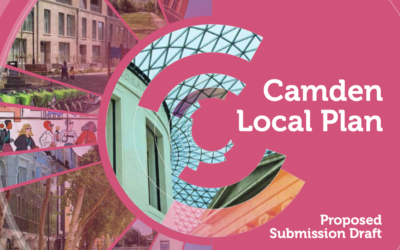Open spaces

Why it matters
So much of the form and character of Highgate can be attributed to its hilltop position and its green spaces.
Seen from above, the area’s major open spaces form an almost complete ring around the plan boundary, with Hampstead Heath and the Kenwood Estate to the South West, linking with Highgate golf course to the North West, Highgate and Queen’s Wood to the North, Parkland Walk to the East and Waterlow Park and Highgate Cemetery completing the ring to the South.
This encirclement of major green spaces has kept Highgate as it is; a true London village which has, to a large extent, retained its semi-rural character from the end of the 19th century.
What we’re doing
Tree Group
We established a Tree Group to map, photograph and protect our existing trees. We’ve met with both Camden and Haringey councils to help ensure they follow the Plan’s tree protection policies when assessing planning applications. We also will look to replace trees and find new sites for tree planting.
CIL projects
Many of our high-priority CIL projects support and improve our open spaces such Waterlow Park and Pond Square. There are also proposals for playground projects on the Parkland Walk and the bike track next to Highgate Library.
Other initiatives
Other projects we are involved in include:
- Part of London National City Park project
- Mapping of community growing spaces
What the Plan says
Highgate's Major Open Spaces (Policy OS1)
I. It does not harm protected views identified on the Boroughs’ policies maps;
II. It is not detrimental to the integrity, appearance or setting of the open space in terms of height, scale, massing, use of materials or function.
Protection of Trees and Mature Vegetation (Policy OS2)
II. Developments will be expected to preserve or enhance the character of Highgate’s conservation areas, and the setting of the major open spaces. This should include, where necessary, the provision of new or replacement planting. There should be no net loss of trees as a result of development, and pro rata replacement will be expected. The development should not harm the local network of ecological corridors and stepping stones, unless the need for, and benefits of, the development in that location clearly outweigh the loss.
III. Within the conservation areas or when protected by a TPO, if a mature tree is found to be diseased and requires work significantly reducing its ecological or amenity value, appropriate replacement planting will be sought as close to the original site of the tree as possible. Veteran trees should be retained where possible.
Local Green Space (Policy OS3)
- LGSD1: Open Land on Holly Lodge Estate
- LGSD2: Southwood Lane Wood
- LGSD3: Park House Passage
- LGSD4: Pond Square
- LGSD5: Peace Park
- LGSD6: Fitzroy Park Allotments
- LGSD7: Highgate Allotments
- LGSD8: Shepherd’s Hill Railway Gardens Allotments
- LGSD9: Aylmer Allotments
Biodiversity and Highgate's Green Grid (Policy OS4)
While the composition of garden planting cannot be controlled through policy, any new development or public realm planting project will be encouraged to plant tree species indigenous to the area and, when possible, of genetically local stock, and to undertake, wherever appropriate, the planting of areas conducive to the promotion of the local ecology.
Non-statutory actions
CA28: Encourage residents to engage in ‘guerilla gardening’ in neglected spaces.
CA29: Identify and plot the main trees in the Plan area with a view to preserving and enhancing them.
CA30: Improve access to, and use made of, the parks and woodland in the Plan area.
CA31: Work with community groups to enhance the small pockets of open space.
CA32: Map the ecological corridors in N6 to add to those already designated in the Councils’ polices maps, and identify and map a local Green Grid, building on the All London Green Grid and Boroughs’ Biodiversity Action Plans to set a basis for the active management of green infrastructure, including trees.
CA33: Provision and enhancement of Green Walkways, especially near Highgate Underground Station.
CA34: Organise new signage for pedestrians from Highgate Station to Parliament Hill Fields.
CORE OBJECTIVE
“To empower the whole community to protect, enhance and obtain the maximum benefits from Highgate’s open spaces.”
OPEN SPACES POSTS
Grassroots community groups in Haringey
THE IMPORTANCE OF GRASSROOTS COMMUNITY NETWORKS IN HARINGEY There are a number of self-organised and independent borough-wide networks of residents groups. They are run by and for local people, and largely unfunded. These networks are important for many reasons: ·...
HNF submission on the Draft New Camden Local Plan
Highgate overlooked as a neighbourhood While we welcome this Draft New Local Plan and appreciate the work that has been done on it, we would like to draw your attention to one issue that has been overlooked. Our neighbourhood Highgate is under the governance of both...
Spring update: development news and events
This is an example of our monthly newsletter - if you would like it to arrive in your inbox every month, please click the "subscribe to our mailing list" button on the home page April 2025 news STOP PRESS: Camden Council have announced that they will no longer allow...
Highgate needs YOU
The Forum is made up of people like you who care about making Highgate a better place to live and work. Come join us!
Email us at info@forhighgate.org
FOLLOW US



